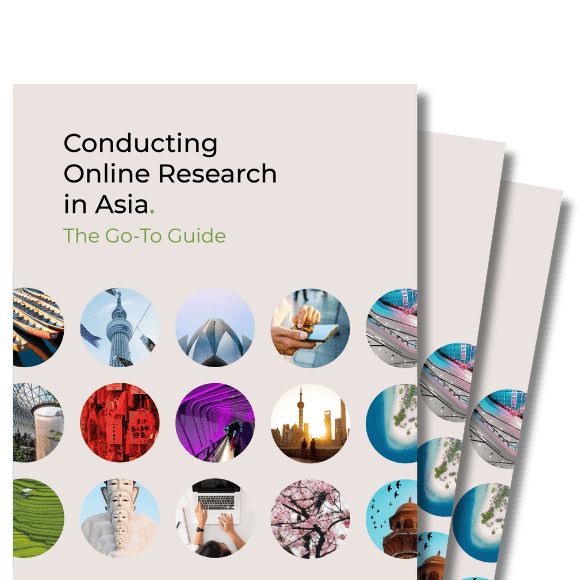Discover why the top global brands trust Kadence
Trusted by
How to conduct online market research in Asia: The Go-To Guide
What online methodologies work best in India? How do you get the most out of respondents through digital methodologies in China? Experts across our global boutique share best practice tips and techniques for conducting online market research in Asia.
Download the guide now
Market research services
We work with the world’s leading brands, harnessing research to unlock new ideas, develop future strategies and power business growth.
Brand and advertising research
We help brands create comms that cut through by understanding the messages which truly resonate with your target audience.
Customer and market understanding
We bring businesses closer to their customers and help them navigate the broader market, so they can future proof their strategy.
Insight activation
Our work doesn’t stop at the debrief. We go further, workshopping findings and creating standout creative outputs to raise the impact of research and turn insight into action.
New product development research
We partner with brands to develop winning products, from concept development right through to pricing research.
Online and offline fieldwork services
We’re a trusted fieldwork partner to top-tier organisations, providing them with the data they need to drive decision-making.


We’ve been working with Kadence on a couple of strategic projects, which influenced our product roadmap roll-out within the region. Their work has been exceptional in providing me the insights that I need.
Senior Marketing Executive
Arla Foods
I have been working with Kadence for more than 4 years and they have always delivered consistently good outputs. Their ability to understand business goals and translate them to research objectives as well as a high degree of flexibility by collaborating with clients and providing recommendations that are otherwise overlooked differentiate them from other research agencies in the market.
Head of Insights
Discovery
Kadence has produced an exceptional body of work which plays a crucial part in planning marketing strategies and understanding the opportunities for our business as we continue to grow. We couldn’t ask for a better partner; they provided true expertise, valuable insights and commitment to quality across each project.
Performance Marketing & Analytics Director
Treatwell
We have been engaged with Kadence since 2016. Since our first partnership, Kadence has been instrumental in supporting our business efforts and have continuously proven their value in research, insights and analysis that have helped us to gain many wins. Kadence consistently pushes the boundaries and offer inspirations that provide deep business insights and drive business strategies.
Head of Research
Bloomberg
Kadence International is a partner that has done well in understanding our business needs and driving to the best possible solution. Everyone from the outside design firm to my internal product partners are extremely appreciative and impressed with the level of insights and access to the teen perspective that you’ve provided. With Kadence, I am able to trust the project will turn out great because I know the quality of work your team delivers for me.
American Student Assistance
Compared with those who evaluated the 2D static bottle images, the respondents who reviewed the AR concepts were much more likely to comment on some of those critical details that make the bottle feel premium … We found that they were spontaneously noticing these [details] and telling us what they liked about them … so it was more organic and allowed the elements that they noticed and cared about to rise to the surface naturally … As well as the benefits of gathering more detailed feedback generally, it also allowed us to get some really great quotes and video content for presenting to customers.
Global Insight Manager, Asahi Europe and International
Asahi Europe and International
Kadence’s reports give us the insight, conclusion and recommended execution needed to give us a different perspective, which provided us with an opportunity to relook at our go to market strategy in a different direction which we are now reaping the benefits from.
Sales & Marketing
Bridgestone
Kadence has been a long term partner with Changi Airport Group, providing research and insights to help shape our communication and business strategy. The team offers sound counsel on research projects and can distil complicated information and present it clearly, and succinctly to the audience. Engaging our audience does not stop even when travel is still restricted; this research helps Changi Airport assess our communications efforts in key markets to emerge prepared when travel resumes.
Changi Airport
We knew from the start that the inaugural GoBear Financial Health Index was going to need the right research partner to realize our vision. This team needed a curious mind, sharp analysis, as well as the willingness to roll up their sleeves and get hands on with us. Kadence International has proven to be that partner and the study’s success has exceeded my expectations. I am excited to see future iterations of the study with them by our side.
Vice President – Marketing
GoBear
We have been working with Kadence for more than 5 years on various strategic global B2C and B2B projects.
They always deliver a high-quality delivery, with insightful and valuable recommendations that helped us better define our brand strategy towards our customers and professional partners.
We have built a strong collaboration over the years with Kadence teams, and they are fully trusted by the whole organization.
Royal Canin Global Brand Strategy & Insights team
Royal Canin
The team go the extra mile to make sure all the details are covered and to ensure the successful completion of our projects. Kadence always put the client’s priorities and perspectives ahead of anything else and create an experience that reflects our marketing needs / goals.
Corporate Communications / Public Relations
Brand Management Department
Panasonic – Singapore
At Panasonic, we’ve always believed in collaborative work. Here, Kadence has been instrumental in helping us understand our status quo, identify the key drivers of NPS and strategic improvement areas across our refrigerator, air conditioners and washing machine categories. Team Panasonic is grateful for the sincere efforts put in, this in turn, will help us serve our consumers better.
Panasonic – India
Kadence helped us not only conduct a thorough and insightful piece of research, its interpretation of the data provided many useful and unexpected good-news stories that we were able to use in our communications and interactions with government bodies.
General Manager PR -Internal Communications & Government Affairs
Mitsubishi
I have leveraged Kadence’s design and curation services extensively over the last year and continue to be wowed by their speed, agility, and quality of output. The team helped me turn multiple key presentations and infographics last year into WOW content, helping create compelling stories that were memorable and effective. Probably more than anything, I value their partnership and willingness to help, not just “sell” which is rare in today’s world!
Senior Insights Leader
Mars
Thanks to the support of Kadence team, we were able to meet all the goals we had set for ourselves with the Consumer Passport Program, inculcating a culture of customer centricity – as a passionate brand, we believe that the customer comes first; without the customer no business can be successful – and seeing the world through the customer’s point of view to understand the realities of market.
Havells
Kadence team is more like a partner to us. We have run a number of projects together and … the pro-activeness, out of the box thinking and delivering in spite of tight deadlines are some of the key reasons we always reach out to them.
Vital Strategies
Kadence were an excellent partner on this project; they took time to really understand our business challenges, and developed a research approach that would tackle the exam question from all directions. The impact of the work is still being felt now, several years later.
Customer Intelligence Director
Wall Street Journal
Sectors we serve
With over 30 years in the business of market research, we have extensive experience and a depth of knowledge across a range of sectors.
We bring this to bear to design the very best approach to meet your objectives.
Data and insight: global reach with local expertise.
Our global footprint makes us the go-to partner for international market research. We offer all qualitative and quantitative methodologies across our office network and beyond.







































 Head of Insights
Head of Insights Performance Marketing & Analytics Director
Performance Marketing & Analytics Director Head of Research
Head of Research American Student Assistance
American Student Assistance
 Global Insight Manager, Asahi Europe and International
Global Insight Manager, Asahi Europe and International Sales & Marketing
Sales & Marketing Changi Airport
Changi Airport
 Vice President – Marketing
Vice President – Marketing Royal Canin Global Brand Strategy & Insights team
Royal Canin Global Brand Strategy & Insights team Corporate Communications / Public Relations
Corporate Communications / Public Relations Senior Insights Leader
Senior Insights Leader Havells
Havells
 Vital Strategies
Vital Strategies
 Customer Intelligence Director
Customer Intelligence Director














